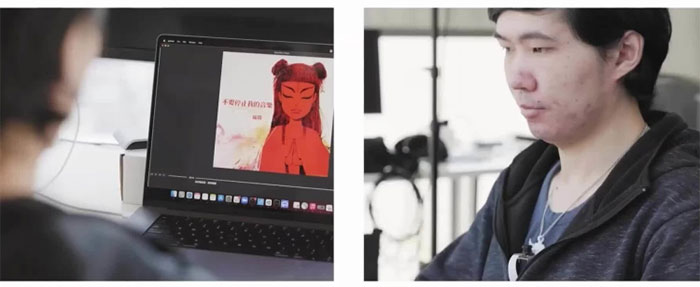Experts Develop a Collar That Can Track Wearers’ Chin Movements to Identify Their Requests.
Associate Professor Cheng Zhang and researcher Ruidong Zhang at Cornell University in the United States have developed the Speechin collar – a prototype device capable of recognizing whispered speech from the wearer, as reported by New Atlas on February 14. This device is based on the NeckFace collar that Cheng Zhang unveiled last year, which can track facial expressions.
Ruidong Zhang testing the collar. (Video: Cornell University).
In a conference room or a quiet library where hands-free operation is not possible, smartphone users often find it inconvenient to give voice commands. The new research, published in the proceedings of the Association for Computing Machinery on Interactive, Mobile, Wearable Computing, addresses this issue.
In addition to a microprocessor, battery, and Bluetooth module, the Speechin collar features an upward-facing infrared camera that captures images of the area beneath the wearer’s chin. It is positioned this way thanks to a pair of “wings” that extend outwards, along with a coin acting as a counterweight at the base. This design ensures that the camera does not point directly at the user’s face, maintaining privacy.
Using machine learning algorithms, the device can determine what command the wearer is whispering based on chin movements. It then forwards these commands to the connected smartphone.

New technology can be used not only in situations where people must remain quiet.
Initially, the research team trained the system by observing the chin movements of 20 volunteers as they whispered various words and phrases, with 10 participants speaking English and 10 speaking Mandarin. In subsequent tests, participants successfully whispered 54 common commands in English and 44 words and phrases in Mandarin.
The Speechin collar achieved accuracy rates of 90.5% and 91.6% for recognizing English and Mandarin speech, respectively. However, these numbers dropped significantly when volunteers used the device while walking, as individual walking styles caused unpredictable head movements.
Experts hope that with further improvements, this new technology could be used not only in quiet environments but also in noisy surroundings where smartphones struggle to hear the user’s voice. The Speechin collar could also be utilized by individuals who are unable to speak.


















































